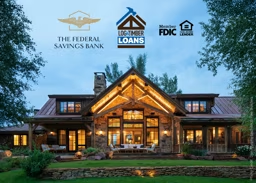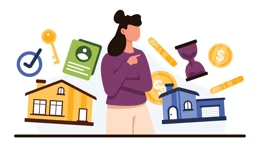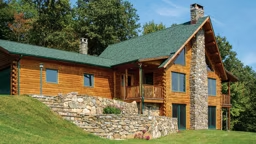
By Peter H. Miller, President of the Home Group, Active Interest Media
The National Association of Home Builders' Building Systems Councils (BSC) was back together again for the Building Systems Housing Summit in Atlanta last month. This two-day conference is where off-site construction builders and suppliers convene for education and networking, including those who are the leading suppliers of log and timber home packages.
Education topics ranged from innovation for off-site panelized house manufacturing, to creating a positive company culture, to understanding SIPs panel construction, to implementing a concrete building system in the field, as well as an NAHB economic forecast. Tennessee home builder Dan Mitchell moderated a panel discussion about “Adding Log & Timber Frame Construction to Your Portfolio.”
In his “Innovation Hacking” keynote presentation, Daniel Small of DaVinci Consulting began by describing the housing challenge: “To meet homebuyer demand over the next twenty years, we will need to build 51,000,000 homes,” he said. For a housing industry which is currently delivering less supply than there is demand, this is a heavy lift. “Innovation is NOT about buying software, using BIM or deploying robots,” Small asserted. “It is about collecting data to determine what our customers need. Our customers don’t want ‘solutions,’ they want to get things done.” Small congratulated the NAHB’s Building Systems Councils in attendance, competitors in the same room, for collaborating to solve the housing shortage problem.
Al Cobb and Jack Armstrong of the Structural Insulated Panel Association stressed the importance of “where you build,” to determine “how to build.” Several advantages of SIPs, and some disadvantages, were described in this seminar. For example, SIPs can improve energy efficiency and ensure an airtight house, but this requires close attention to moisture ventilation. There are also HVAC considerations to achieve the proper air quality such as “one ton HVAC per 1,100 square feet of space,” according to Cobb. “Do a blower door test twice,” Cobb advised. “SIPs are more expensive, but a life-cycle analysis will usually justify their cost. When SIPs arrive on the jobsite ready to assemble a three- or four-man crew can install an average 1,000 feet of panels per day,” Cobb said.
Randy White and Alan Hoffman presented a “Business Case for Building with Insulating Concrete Forms-a Builder’s Perspective.” Their Dallas-based home-building firm builds net-zero homes which get a $9,000 tax credit from the EPA. They cited the National Ready Mix Concrete Association as a good resource for learning more about this material, the price of which has not fluctuated as much as lumber has.
NAHB’s Chief Economist Dr. Robert Dietz took the stage after our networking lunch to present his housing forecast for year-end 2022 and into next year. “We are in a soft housing recession right now, with nine straight months of housing construction declines,” Dietz explained. “To curb inflation, the Federal Reserve will raise interest rates at least twice more.” While this is cause for concern as fewer homebuyers can qualify for a mortgage, many of the log and timber home suppliers in the audience are selling to all-cash buyers.
During networking breaks, I heard more about “cash buyers” from our log and timber home builders and supplier friends. Notwithstanding the NAHB’s concerns about the Fed’s monetary policy, the company executives I spoke with are experiencing unprecedented demand for their house packages. This included the owners and operators from Blue Ridge Log Cabins, Honest Abe Log Homes, Appalachian Log Structures, Coventry Log Homes, PrecisionCraft/Riverbend, StoneMill and several others.
“We have clients who are buying land sight unseen and building family compounds with us,” I heard this from more than one log and timber supplier. Californians and New Yorkers are flocking to more affordable Southern states like Texas and Tennessee to build their “forever homes,” often a custom home constructed with logs, timbers and other types of building materials. (Dietz pointed out that the top ten markets for new construction are all in the South.)
I took my own turn at the podium to remind log and timber home suppliers that our 2022-23 Log & Timber Home Production Report’s questionnaire will arrive on their desk in the spring of next year. This survey tracks log and timber home unit production which quantifies the log and timber home industry’s share of the total single-family market, an estimated 4% to 5% of the custom home market segment.
Over a coffee break, I heard more than one log and timber home package supplier say, “We sell a home package and lock in the price. But six or eight months later, when it’s time to get paid in full, our costs have gone way up. This is very tough on our profit margins.” When I asked if the pricing model with log home buyers could be changed to allow for this fluctuation in material costs, I heard, “Our salespeople would be challenged to sell that.”
Log and timber home builder Dan Mitchell spoke about how he visits local home builders associations to convince conventional stick builders that there is opportunity for building log and timber homes in addition to, or instead of, what they currently build. He encouraged log and timber package suppliers to do the same. “How many of you have home packages sitting on your lot, sold to clients who can’t find a builder?” Mitchell asked. Every supplier raised his hand.
“Now that business is so good, we’ve gotten complacent,” Mitchell continued. “We need to connect our home buyers with builders, builders we attract to our log and timber home business.” Everyone agreed that the home-building industry’s labor shortage is an impediment to faster growth. I recalled a breakfast conversation I had in August with a custom home builder who told me he’d turned away over $20 million in new business because he couldn’t find available subcontractors. The only thing worse than making something you can’t sell, is selling something you can’t make.
On the second day of the NAHB Building Systems Councils Summit, the Jerry Rouleau Awards for systems-built housing design and marketing ceremony took place during lunch. The winners will be announced on NAHB’s website soon and then showcased in Log & Timber Home Living’s June/July 2023 issue, which coincides with our coverage of National Log Homes Month.
Additionally, there were awards bestowed to Doug Parsons of Appalachian Log Structures and Ken Semler of Impresa Building Systems for their “Lifetime Achievement in Systems Built Housing.”
There were two surprising data points revealed during the BSC Summit. One was the incidence of growth in the single-family homes-for-rent segment, now 4.6% of the total single family units built. The other was the buoyancy of the residential remodeling market projected to grow 7% year-over-year in 2022 and another 6% in 2023.
Are these two segments good potential for log and timber home suppliers? I think so, whether building additions or outbuildings for past clients or VRBOs for new clients, these fertile segments could be lucrative.
We might be in a “soft recession” but attendees I spoke with aren’t feeling it. What they are seeing is their client’s exodus from the city to the country, an increase in house size whether for a forever home or a family compound, rising material prices which reduce profit margins, very busy home builders and a sub-contractor labor shortage. Perhaps the strong demand for custom log and timber houses will prevail over the economic headwinds we now face. Nobody wants the talk of recession to be a self-fulfilling prophecy.
This content is sponsored by The Unico System.











